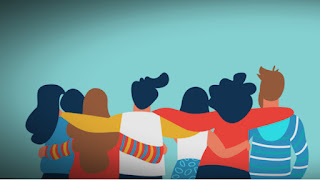May Day: Honoring All the Work That Sustains Us
May 1st is a day of paradox and power. It’s Beltane, a time of fertility, fire, and renewal in Pagan traditions — when the Earth’s abundance begins to blossom, and we honor life bursting forth in all its forms. It’s also International Workers’ Day, a day of protest, remembrance, and solidarity rooted in the labor movement and the fight for dignity and justice for all who work.These two May Days — one ancient, one modern — share more than a calendar date. Both remind us that life requires tending. That something sacred happens whenever people rise up, plant seeds, or care for one another. And both call us to remember: not all labor wears a uniform or draws a paycheck.
The Work ThatGrows the World
The Earth Works. We Work.Beltane is a celebration of Earth’s labor — the flowering, the fruiting, the unseen toil of root and mycelium. It’s also a reminder that human survival depends on the often invisible work of care: food grown, meals cooked, children held, elders supported, bodies and communities tended.
International Workers’ Day lifts up the labor struggles of wage earners — especially those who’ve been exploited, underpaid, or made invisible by systems that value profit over people. But the meaning of “worker” cannot stop at factory gates or office doors.
The Work of Surviving
So many people — especially disabled, queer, racialized, and impoverished folks — do not survive because they are “productive.” They survive through grit, mutual aid, community, and the sacred labor of persistence.There is holy work in getting out of bed when the world is heavy.
There is holy work in navigating systems that weren’t built for your body or brain.
There is holy work in staying alive, in dreaming of something better, in loving what the world tells you is unlovable.
Women’s Work, Love’s Work
Historically, “women’s work” — often unpaid, often unseen — has included birthing, feeding, caregiving, cleaning, mending, nursing, comforting, teaching. This labor is the backbone of every society, yet so rarely honored.And what about the work of loving? Loving our people, our communities, the land, the sacred, ourselves? That’s not soft. That’s revolutionary. Love is a practice. A risk. A labor.
Try It: Expand Your Definition of Work
- Name a kind of work you do that you’ve never been paid for. Say it aloud. Claim it. It counts.
- Honor someone in your life who works in unseen or undervalued ways — send a note, light a candle, share their story.
- Join in collective action — not just protests, but community meals, mutual aid drives, or spaces of joy and solidarity. The work of changing the world is shared.
Sacred Renewal, Fierce Solidarity
Beltane reminds us that renewal is possible. That growth follows long winters. That life insists.International Workers’ Day reminds us that no one is free until all are free. That change is built through collective effort. That every kind of laborer deserves respect and rest.
So today, may we:
- Celebrate what is blossoming
- Refuse what is dehumanizing
- Honor all the work — waged and unwaged, visible and invisible — that sustains life
Your work — all of it — matters.
Rev. Amy













